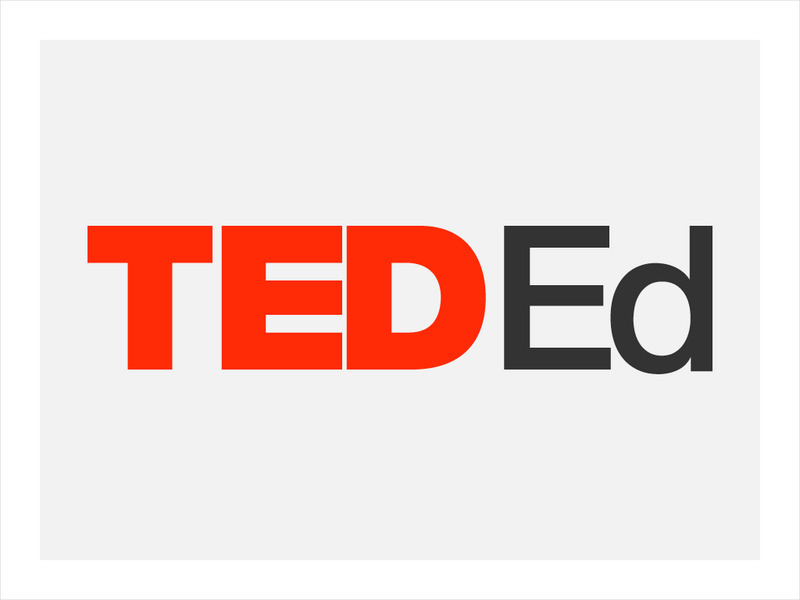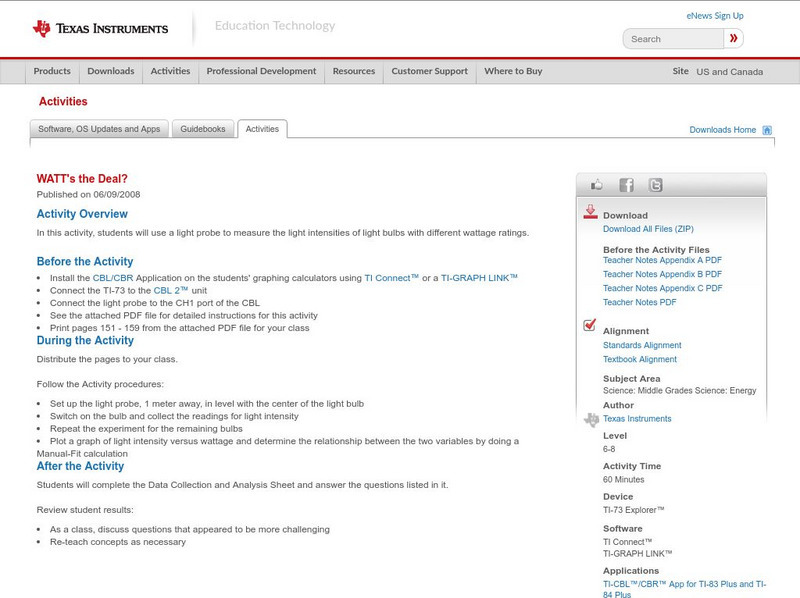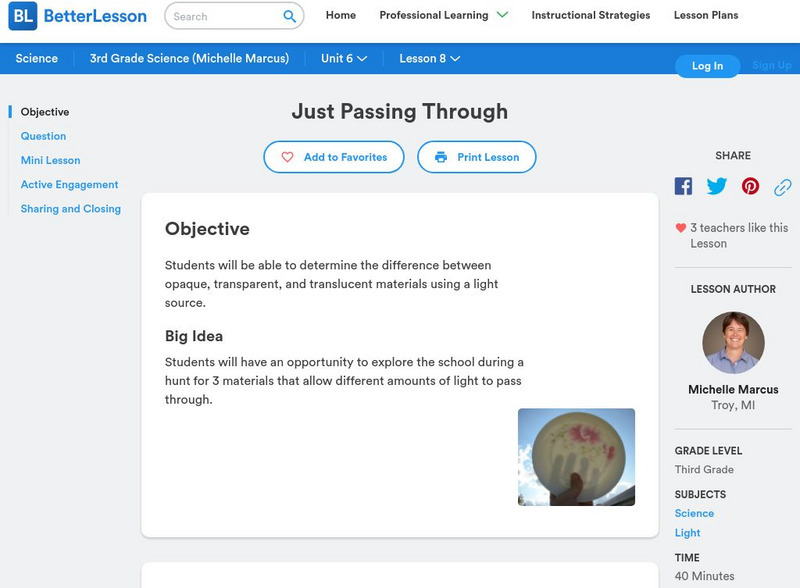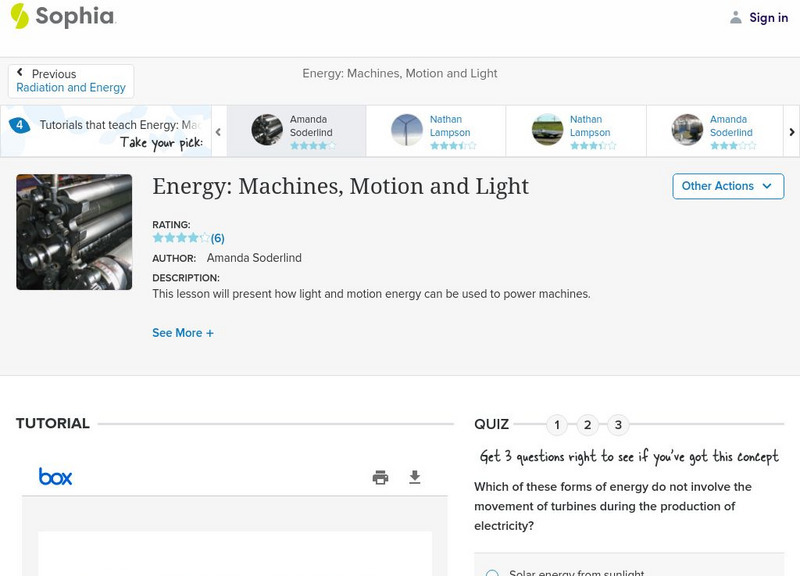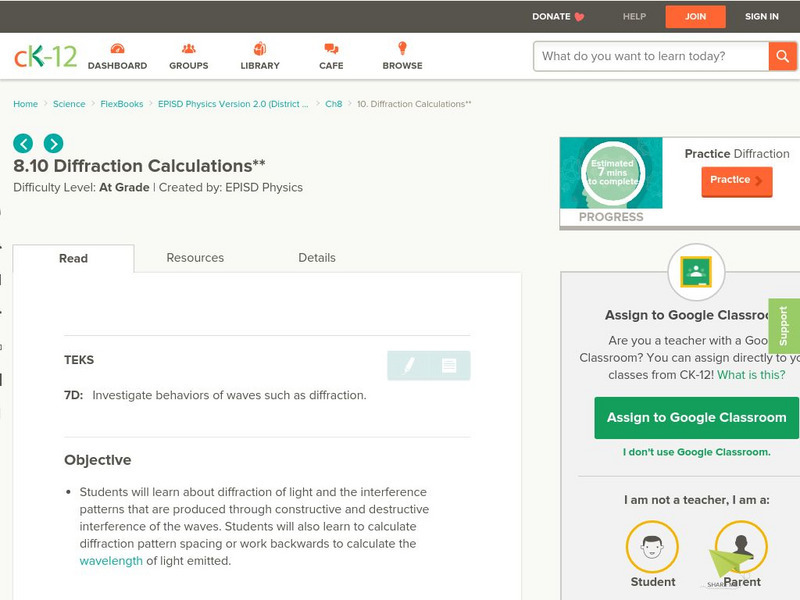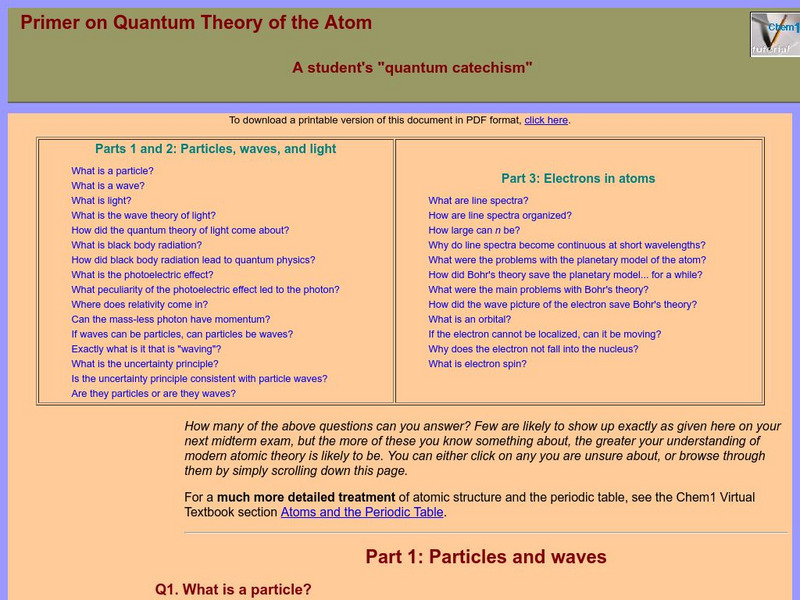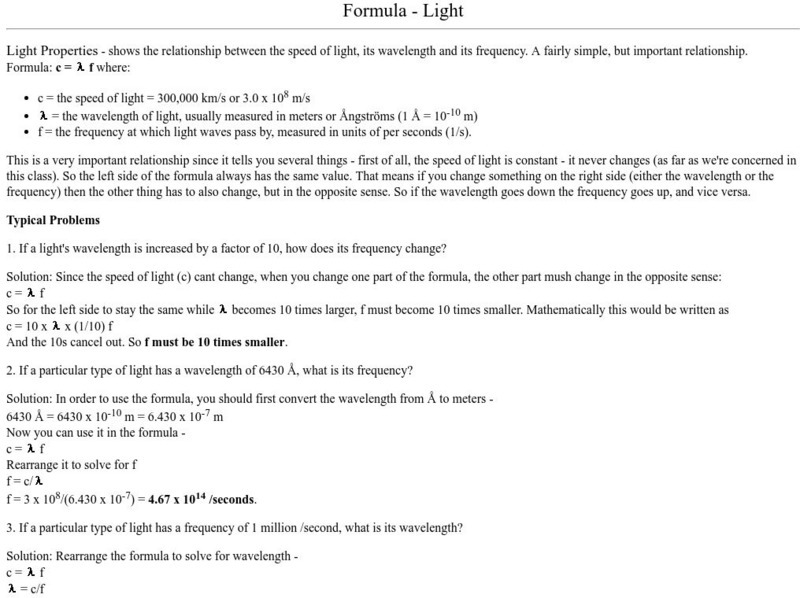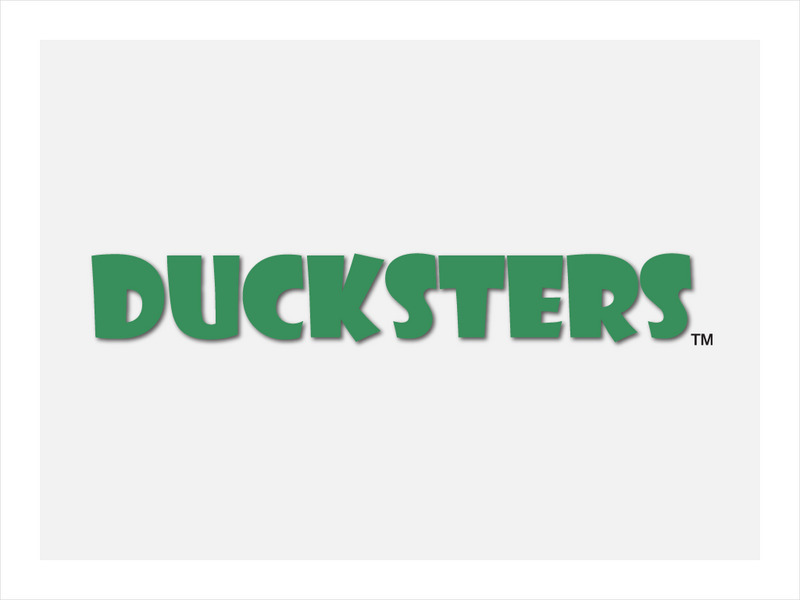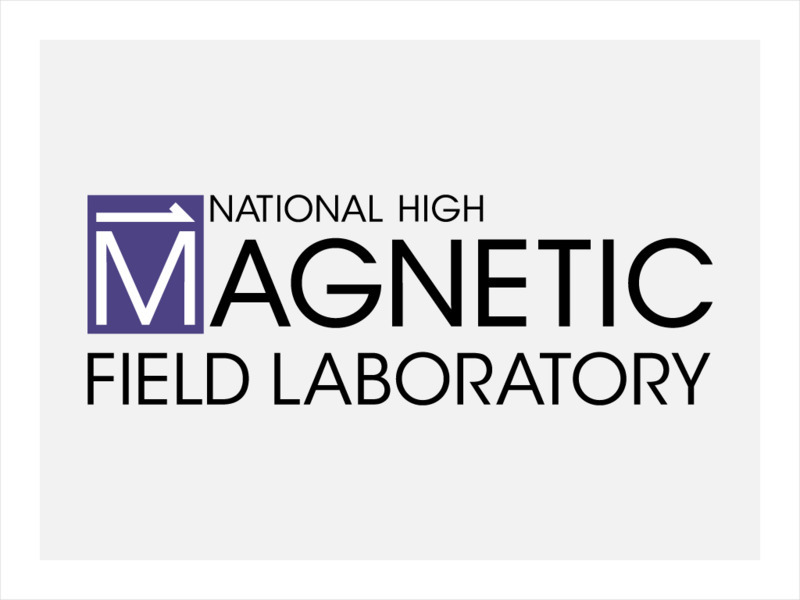Hi, what do you want to do?
Simon Fraser University
Chem1 Virtual Textbook: Wave, Particle, or What?
Acting as a subtopic of the General Chemistry Virtual Textbook's section on Atoms and the Periodic Table, this site discusses light, waves, and particles. Part of the discussion involves a definition and working information on the...
University of Colorado
University of Colorado: Physics 2000: Einstein's Legacy: Microwave Ovens
A series of pages that explain how microwave radiation is utilized by ovens to cook food. Includes several Java applets.
CK-12 Foundation
Ck 12: Plix: Wave Interactions: Law of Reflection
[Free Registration/Login Required] Move the light source to see what happens to the reflected ray as you change the angle of the incident ray.
NASA
Nasa: Mission: Science: Electromagnetic Spectrum: Infrared Waves
Infrared light lies between the visible and microwave portions of the electromagnetic spectrum. Infrared light has a range of wavelengths, just like visible light has wavelengths that range from red light to violet.
TED Talks
Ted: Ted Ed: What Is Color?
Colm Kelleher describes the physics behind colors- why the colors we see are related to the period of motion and the frequency of waves. [3:09]
Synopsys
Synopsys: Learn About Optics
Highly informational optic site for kids provides everything one might want to know about light. Various topics include light basics, controlling light, lenses, complex lenses, what's cool about lasers and much more!
Exploratorium
Exploratorium: Science Snacks: Moire Patterns
In this activity, students will use Moire patterns to demonstrate wave interference.
Physics Central
Physics Central: Physics in the Snow: Snowy Colors
A simple experiment through which students observe the connection between color and heat and prove that dark-colored objects and light-colored objects heat at different rates, even when exposed to the same heat or light source.
Texas Instruments
Texas Instruments: Watt's the Deal?
In this activity, students can use a light probe to measure the light intensities of light bulbs with different wattage ratings.
Exploratorium
Exploratorium: Critical Angle
Students can see light reflected and refracted in this demonstration. They will also discover the total internal reflection of light.
The Wonder of Science
The Wonder of Science: 1 Ps4 2: Illumination and Darkness
This NSTA vetted source includes resources to allow students to make observations that prove objects in darkness need light to be illuminated. Included are assessment ideas, videos, examples, lesson plans, and photos of student work.
Texas Instruments
Texas Instruments: Comparing Sunscreens
In this activity, students use the UVB Sensor to measure the amount of UVB light that passes through a thin film of sunscreen. They analyze the relationship between the SPF values and the intensity of UVB light transmitted by the sunscreen.
Florida State University
Florida State University: Molecular Expressions: Refraction of Light
Manipulate the incident angle, color of light, wavelength, and medium to see how the refracted angle is affected.
Exploratorium
Exploratorium: Soap Bubbles: Create Geometric Art With Soap Films
In this lesson plan students will learn about reflection of light using soap bubbles.
Better Lesson
Better Lesson: Just Passing Through
Students will have an opportunity to explore the school during a hunt for 3 materials that allow different amounts of light to pass through. Included in this lesson are videos showing the lesson in progress, examples of students' work,...
CK-12 Foundation
Ck 12: Physics Simulation: Least Time
[Free Registration/Login Required] Explore how Snell's Law arises out of the principle of least time; understand how light rays change direction at interfaces between materials using this interactive simulation. A PDF worksheet and a...
Sophia Learning
Sophia: Energy: Machines, Motion and Light
An introductory lesson describing the definition of energy, and highlighting different sources of usable energy.
CK-12 Foundation
Ck 12: Diffraction Calculations
[Free Registration/Login may be required to access all resource tools.] Students investigate diffraction of light and the interference patterns that are produced through constructive and destructive interference of the waves. Students...
Simon Fraser University
Chem1 Virtual Textbook: Primer on Quantum Theory of the Atom
Covering a range of topics related to the quantum theory of the atom, this site provides a three-part dissection of atomic theory including information on particles, waves, light, electrons, and atoms.
University of Minnesota
University of Minnesota: How Does Light Travel?
Contains a four step procedure to deriving the law of reflection using algebra, Fermat's principle, and calculus (simple derivatives). This is good for an in-class theoretical exercise.
Other
Uni: Astronomy: Formula Light
Learn about light properties through practice with formulas. This resource shows the relationship between the speed of light, its wavelength, and its frequency. A fairly simple, but important relationship.
ClassFlow
Class Flow: Visible Light and the Electromagnetic Spectrum
[Free Registration/Login Required] This flipchart introduces fifth grade students to the electromagnetic spectrum and focuses on the visible light spectrum, but all types of energy waves in the electromagnetic spectrum are touched on. It...
Ducksters
Ducksters: Practice Science Answers: Easy Light, Sound, Color
Take this quiz that contains basics questions on light, sound, and color.
National High Magnetic Field Laboratory
Magnet Academy: Zeeman Effect 1896
Most of us have seen the rainbow-hued breakdown of the composition of light. Light is of course a form of energy. A magnetic field changes the behavior of light- a phenomenon known as the Zeeman effect.
Other popular searches
- Light Waves
- Light and Sound Waves
- Properties of Light Waves
- Light Waves Activity
- Light & Sound Waves
- Light Waves Lab
- Light Spectrum Waves
- Interactions of Light Waves
- Light Waves Powerpoint
- Light Waves Astronomy
- Light Sound Waves
- Light and Radio Waves









